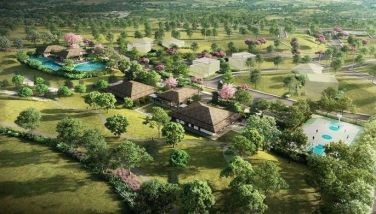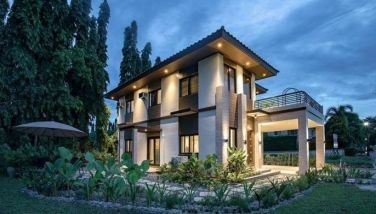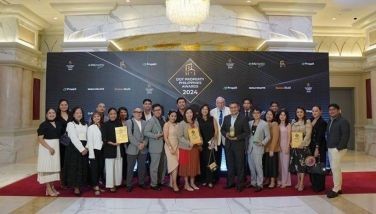Commercialization of rice husk as cement substitute pushed
May 29, 2004 | 12:00am
LOS BANOS, Laguna – The commercialization of a technology that makes use of rice husk ash (RHA) as substitute for cement is now being pushed.
The technology was developed by researchers of the Angeles University Foundation-College of Engineering (AUF-CE) in Angeles City, Pampanga. Cooperator was the deal Rosario Rice Mill/Ricardo Bucud in San Leonardo, Nueva Ecija.
The project was supported by the Department of Science and Technology-Philippine Council for Industry and Energy Research and Development (DOST-PCIERD).
PCIERD, headed by Executive Director Graciano Yumul Jr., reported that the study has found RHA to be a good substitute for ordinary Portland cement of up to 35 percent.
This was found with the application of RHA cement in the wall plastering of a chapel in Guagua, Pampanga, where the pilot plant of the project cooperator was located.
Expected to benefit from the technology are small-scale contractors, entrepreneurs, and rice mill owners in Region 3 (Central Luzon).
"The RHA is considered an agricultural waste that has commercial application, specifically in Region 3 owing to its abundant supply," PCIERD pointed out.
Statistics compiled by the Biomas Atlas of the Philippines show that Central Luzon’s annual rice husk production during the 1990-1999 period exceeded 350,000 metric tons.
DOST explained that when rice husk is burned, 17 to 25 percent of its weight is retained in ash form.
AUF had earlier said that the project was envisioned to provide socioeconomic benefits to technology adopters and environmental impact in the region.
PCIERD also pointed out that the utilization of rice husk is particularly attractive in the country because it impacts on the environment and capital costs of the structure.
Initial studies on the use of RHA-lime/RHA-portland cement for non-load bearing blocks for low-income family housing was initially done in 1991 by the University of the Philippines-Building Research Services, in partnership with DOST. – Rudy A. Fernandez
The technology was developed by researchers of the Angeles University Foundation-College of Engineering (AUF-CE) in Angeles City, Pampanga. Cooperator was the deal Rosario Rice Mill/Ricardo Bucud in San Leonardo, Nueva Ecija.
The project was supported by the Department of Science and Technology-Philippine Council for Industry and Energy Research and Development (DOST-PCIERD).
PCIERD, headed by Executive Director Graciano Yumul Jr., reported that the study has found RHA to be a good substitute for ordinary Portland cement of up to 35 percent.
This was found with the application of RHA cement in the wall plastering of a chapel in Guagua, Pampanga, where the pilot plant of the project cooperator was located.
Expected to benefit from the technology are small-scale contractors, entrepreneurs, and rice mill owners in Region 3 (Central Luzon).
"The RHA is considered an agricultural waste that has commercial application, specifically in Region 3 owing to its abundant supply," PCIERD pointed out.
Statistics compiled by the Biomas Atlas of the Philippines show that Central Luzon’s annual rice husk production during the 1990-1999 period exceeded 350,000 metric tons.
DOST explained that when rice husk is burned, 17 to 25 percent of its weight is retained in ash form.
AUF had earlier said that the project was envisioned to provide socioeconomic benefits to technology adopters and environmental impact in the region.
PCIERD also pointed out that the utilization of rice husk is particularly attractive in the country because it impacts on the environment and capital costs of the structure.
Initial studies on the use of RHA-lime/RHA-portland cement for non-load bearing blocks for low-income family housing was initially done in 1991 by the University of the Philippines-Building Research Services, in partnership with DOST. – Rudy A. Fernandez
BrandSpace Articles
<
>
- Latest
Latest
Latest
October 23, 2024 - 9:30am
By May Dedicatoria | October 23, 2024 - 9:30am
October 11, 2024 - 3:45pm
October 11, 2024 - 3:45pm
October 10, 2024 - 11:30am
October 10, 2024 - 11:30am
October 5, 2024 - 12:08pm
October 5, 2024 - 12:08pm
September 24, 2024 - 1:00pm
September 24, 2024 - 1:00pm
September 13, 2024 - 4:00pm
September 13, 2024 - 4:00pm
Recommended






























